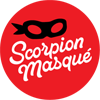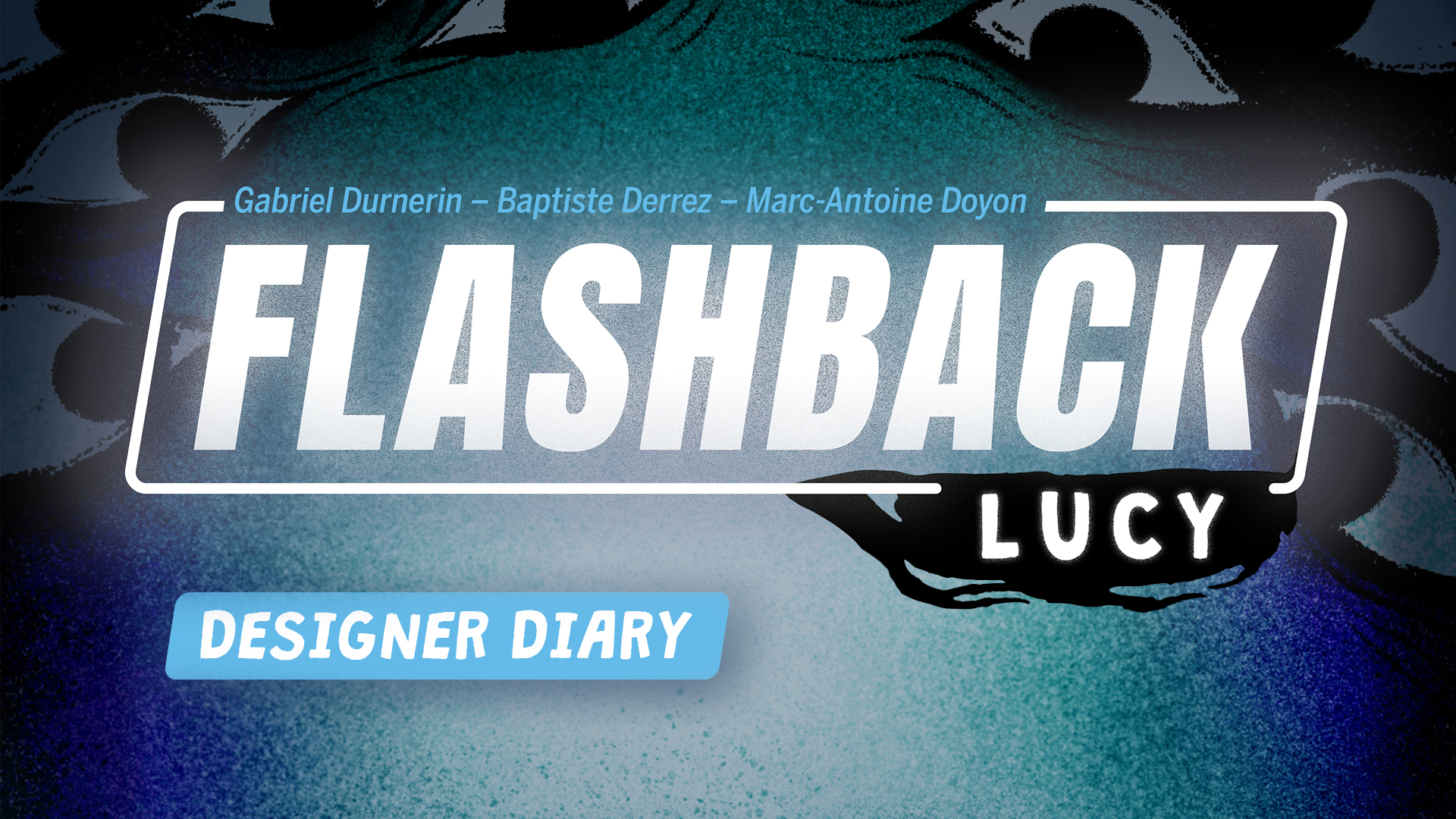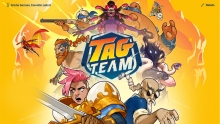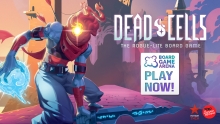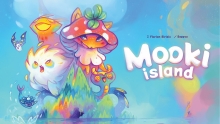Carnet d'Auteurs - Flashback : Lucy
[Flashback: Lucy, written by Gabriel Durnerin, is the 2nd installment of the Flashback series created by Baptiste Derrez and Marc-Antoine Doyon, published by Scorpion Masqué. The first installment, Flashback: Zombie Kidz, won the 2023 As d'Or in the Children’s Game category. ]


credit : Eva Jiahui Gao
GENESIS
The Lucy project began for me in April 2022. At that time, I was mainly working on two role-playing projects. I received a message from Christian Lemay (the founder and then boss of Le Scorpion Masqué) late one evening on Messenger (well, late for me. In Quebec it was 4pm).
I knew Christian because I'd met him several times at game conventions in the early days of Scorpion Masqué when I was working for Matagot (at the time of the release of his early game, Climb!) and especially when I was a project manager at Iello. I had “poached” him so that Iello could distribute Scorpion Masqué, and we had worked together for several years. We got on very well, with a sincere mutual respect.
So it was a pleasure to see this message appear at 11pm on April 4, 2022.
A certain Marc-Antoine Doyon was also part of the group. I only knew him by sight, through his ‘Es-tu Game’ game review YouTube channel, and his role as jury member for the As d'Or. He was to be the project manager for the project they wanted to talk about. He introduced me to the concept of Flashback and the first box (in the Zombie Kidz universe), which was in the final stages of development at the time. They were looking for someone to write the second box, betting on the success of the first. The theme was to be ‘youth horror’.
(Note from Marc-Antoine: For the new volume in the Flashback series, we wanted something a little more mature, but not too mature. Something that kids who loved the first box would be able to appreciate as an adventure that would grow with them. Being a mega-fan of horror movies and games, I really pushed for something along the lines of “Goosebumps”. As we wanted to work with a new designer for this box, Christian quickly suggested Gabriel, who seemed ideally suited to bring the seriousness and magic that the project required).
Of course I wanted to come on board! Cool people, an ambitious project, a refreshing theme... I said yes immediately.
Within the hour, I received what they had already created for the first game: The demo scenario, the first finished scenario, and the next two scenarios still in development. I tested it alone in front of my PC and I was convinced.
The very next day I spoke to the two people involved, and 10 days later I met the whole team: Baptiste, Marc-Antoine, Christian, and Manuel Sanchez, the Head of Studio. I pitched them a few ideas and the project was launched, with the aim of completing the writing by the summer.
THE HISTORY
The first challenge was to establish what the story would be. I had to respect the theme of youth horror, in the style of the Goosebump books. I initially had the idea of 4 independent scenarios, playable in the order of the player’s choice, each exploring a horror cliché, with a common narrator character (in the manner of Guillaume Montiage's Suspects, for example). But the Scorpion team preferred to keep the structure of the first Flashback: a long story that develops over several scenarios in sequence.
(Note from Marc-Antoine: One of Flashback's strengths is its ability to create links between the different scenarios. From memory, it was also important for us to stand out from other narrative games by offering a linked story with a beginning, middle and end).
Of all the horror classics, I concentrated on the haunted house. The idea soon arose to explore this house in different eras. Five ideas emerged:
- Young people exploring the abandoned mansion, in the style of thousands of horror films. I quickly set it in the 90s as a tribute to Buffy. This would become the first scenario, which eventually moved into the 2010s.
- Porfessional ghost hunters, a cross between the Warrens of the The Conjuring films and the Ghostbusters, where the idea would be to play on pretenses: the ghosts (and players) are made to believe that all is well, while behind the curtain everything is going wrong. This eventually led to the second scenario,set in the 1970s.
- A film set in the 1930s, Ed Wood-style. A scenario that would have been in black and white, with actors disguised as monsters, and monsters pretending to be actors. I let this concept drop, as it would have duplicated the structure of the previous one.
- A trip to Dr. Frankenstein's mansion for a tribute to 19th Century gothic/romantic horror. This resulted in the 3rd scenario.
- A trip back in time to the Salem witch trials and a whole story involving a cave in a cliff inspired by the Locke & Key comic strip. The cliff gave Cliff Manor its name, but has disappeared from history. The rest gave rise to the 4th and final scenario.
Once these foundations had been laid, I needed a link. That's where Lucy was born, a teenager with mysterious powers who, if she touches an object linked to a dead or missing person, is able to revisit their last moment. And this way, I could bring players into the game.

credit : Eva Jiahui Gao
The second link between all the scenarios is the villain! The idea quickly arose of a Shadow who slips in everywhere, whose intentions are unclear and who would be a source of fear for some, and of fascination for others. It's pretty much inspired by a role-playing campaign I'd designed for friends in Brussels, and aesthetically, it's the 90s video game Heart of Darkness I had in the back of my head.
The details of the scenarios only came over time. I wrote the first scenario, and only once I'd agreed the basics with Marc-Antoine did I move on to the second. Nothing was set in stone for the rest of the story, which meant that I was able to modify the storyline as I went along and came up with new ideas.
THE PRESENT
From the outset, the idea behind the game's structure was to take players through a series of flashbacks, each distinct from the other and increasingly distant in time. Between each flashback, each “scenario”, I wanted to try and move the story forward into the present, where it is discovered by the game's protagonist, Lucy. This “present” was subject to many modifications.
I wanted to create an additional scenario that would have been a pack of extra cards set in the present. In each game, players would have had two decks: the present common to all games, which would grow over time, and the past specific to that scenario. Discoveries in the past would allow Lucy to act in the present, to better understand the past...
The idea was cool, but bringing it to life was laborious and, above all, the testers didn’t react very well to it; cards from the present were forgotten, or mixed up with the past, or the eras were confused, creating misunderstandings... in short, it didn't work.
It was in the last third of the writing process that the idea emerged for the comic strip that is now in the game: Lucy's discoveries are narrated by a small comic strip that players interact with before the vision (to see how it was triggered) and afterwards (to see what Lucy discovered in the mansion during the vision).
(Marc-Antoine's note: Indeed, after several playtests, the 5th scenario didn't work. But we quickly became attached to Lucy, and the idea of the recurring theme seemed to meet all the needs of the game. Treating the 5th scenario as a moment of respite between adventures, a neutral zone like in many video games, seemed a good option. We placed the cards on a fixed page and it worked. The comic book idea was born).
THE MANSION
To create the mansion, I first drew up a floor plan based on old blueprints I'd found here and there. I then placed the characters on the plan while writing the scene description on a Word file. The plan of the mansion obviously changed as I went along (for example, the “petit salon” no longer exists), but it was important to me that it remained the same in all the scenarios, so that players who managed to mentally project themselves into it could find their bearings in subsequent scenarios. So once a vision had been established, the rooms that appeared had to stay in the same place for the rest of the story, with only the unknown rooms allowed to move.



THE CARDS
Illustrated cards are the heart of Flashback. Each card represents a vision of a character frozen in the scene. For my part, I used text to allow the artists to project themselves into the scene, putting in all the details I needed to make the scenario work. This example is the first draft of the first card in the first scenario. It then moved several times:
Card 1 - The One Who Loses His Cap
Context: The character is being absorbed by the Shadow, but we can’t really make that out. In reality, claws have come out of the mirror on the dresser behind him and are pulling him into the mirror; a part of his body has been absorbed already.
The character is in a pitch-black room. The only light is coming from a flashlight that has fallen from his hand, from the door of the room (which is open, but which we can’t see from here), and from the window being opened in front of him.
The room is a child’s bedroom, but from the 1960s, and in ruins. Plush toys and dolls with their stuffing spilling out lie on a bed.
The character’s hand is stretched out desperately toward his friend in front of him, who is looking out the window for help. The Shadow’s claws can be seen on his arm.
The baseball cap is falling to the ground in front of the character. (Q1)
The window has been partially boarded up with planks.
A teen has been able to tear away one of the planks. He is afraid. He is looking outside. (2)
Marc-Antoine then came in to make a 3D model of the manor and give every character their perspectives.
This was then passed into the hands of a story-boarder - Jérôme Mireault (as with films: he takes care of making quick, efficient drawings, without details, to enable us to project ourselves onto the final image before having it made by the artists) so that we had a testable version without directly soliciting the final illustrators.

(Note from Marc-Antoine: The main difference with the first Flashback game was that, since the scenarios all took place at the same location, I was under the impression that 3D modeling would be simpler. A big mistake. Because, from vision to vision, we were going into different rooms, in different eras, with different props and characters. The house is complex and deep, so every step of the way, we'd discover a new closet or staircase. In one scenario, there's a piano. In another, a telescope. Each scenario has its era and each era its challenge).
THE GADGETS
One of the key elements of Flashback Zombie Kidz were the gadgets, the hidden elements in the box that gave a new perspective on the game and on the cards, and handling them was a pleasure.
For Lucy, we went through several stages. For a long time, I tried to make sure that the gadget would be the same in every scenario, but used differently each time. It would have been a pack of transparent cards. In one scenario, the transparent cards would be placed on top of the cards to change their visuals. In the second, they’d be used in a “lamp”, which would have projected visuals onto the cards to alter their content. In the next, they’d be placed in a zoetrope to form a film. Finally, in the last one, they’d be used for perspective games, a bit like the old On the Dot game, but in 3D.
The lamp soon disappeared, Manu having made it clear after a few months that we wouldn't have batteries in the box. The zoetrope was far too expensive and took up far too much space in the box. Too bad…
The transparent cards slowly but surely slipped into the graveyard of ideas. But it all added up to the final result (which I won't reveal here, but which I think is super cool!).
My beautiful zoetrope prototype
ILLUSTRATIONS AND FINISHING TOUCHES
The illustration process involved a lot of people, as Laure de Châteaubourg and Jennifer Mati drew all the backgrounds for the cards and the comic book, and Jiahui Eva Gao created all the characters, based on my texts corrected after testing and the storyboards.
The backgrounds were designed first, and the characters placed on them later. For my part, I didn't coordinate all this work (kudos to Marc-Antoine), but I did take part in several meetings with the set artists in particular, in order to agree on what should and shouldn't appear, the angles of view, the moods, etc.
(Note from Marc-Antoine: Coordinating a whole team in four corners of the globe is no easy task. But we managed, and I'm very grateful for the flexibility of everyone involved. Thank you Gabriel for being such a good ally and (Lucy's real) dad. For posterity's sake, I'm going to say I'm her mom).



credit : Laure de Chateaubourg


Hervine Galliou also did a fantastic job with the graphics, the model and the secret gadget, so cool, well done to her!
Then came the long production time and back-and-forth with the factory, which I only followed from a distance, before seeing the finished product appear. There was more than a little stress at the first test to see if everything worked (phew, it was all good!) and before I knew it, the game was arriving in stores and on players' doorsteps.
I hope my game brings you as much pleasure as I had making it with this great team!
And if you want to see even more of the creative process for Flashback : Lucy, here are Art Stations of the illustrators :
Eva Jiahui Gao : https://evajiahuigao.artstation.com/projects/LR1x3w
Jenny Mati : https://www.artstation.com/artwork/qJ0b5n
Laure de Chateaubourg : https://laure_de_chateaubourg.artstation.com/projects/BXbwyD
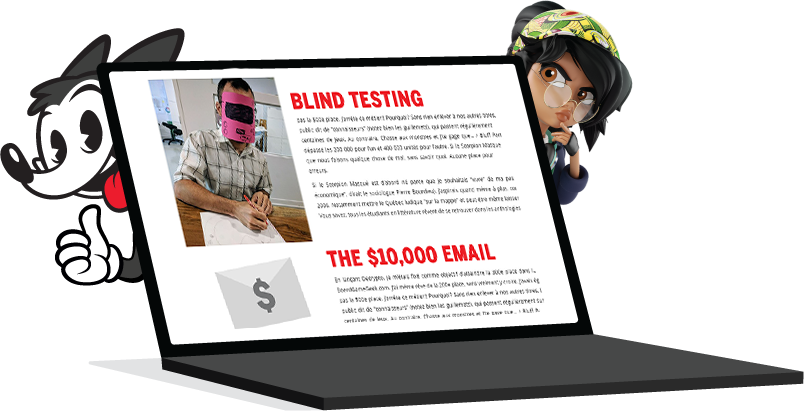
Take a peek behind the curtain...
Once a month Scorpion Masqué's Grand Poobah shares his thoughts with you. From how the market has evolved, to writing rules that make sense, with detours into game mechanisms, you will get a glimpse at the board game industry from the point of view of a publisher.
Copyright © 2025 - Le Scorpion Masqué
